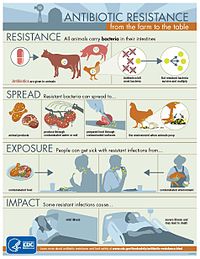
Photo from wikipedia
Aquaculture is a booming industry in the world and China is the largest producer and exporter of aquatic products. To prevent and treat diseases occurred in aquaculture, antibiotics are widely… Click to show full abstract
Aquaculture is a booming industry in the world and China is the largest producer and exporter of aquatic products. To prevent and treat diseases occurred in aquaculture, antibiotics are widely applied. However, the information of antibiotics used in Chinese aquaculture is still limited. Based on peer-reviewed papers, documents, reports, and even farmer surveys, this review summarized antibiotics used in Chinese aquaculture. In 2014, more than 47.4 million tonnes of farmed aquatic products were produced in mainland China. The outputs in the east and south parts of China can reach as much as 600 times higher than those in the northwest areas, which is clearly separated by the "Hu Line" - a line that marks a striking difference in the distribution of population. A total of 20 antibiotics belonging to eight categories have been reported for use, mainly via oral administration. However, only 13 antibiotics have been authorized for application in Chinese aquaculture and 12 antibiotics used are not authorized. Totally, 234 cases on antibiotic residues in Chinese aquatic products were recorded, including 24 fish species, eight crustacean species, and four mollusk species. Thirty-two antibiotics have been detected in aquatic products; quinolones and sulfonamides were the dominated residual chemicals. For specific compound, ciprofloxacin, norfloxacin, and sulfisoxazole have the highest concentrations. Except for a few cases, all residual concentrations were lower than the maximum residue limits. Through the consumption of aquatic products tainted by antibiotics, humans may acquire adverse drug reactions or antibiotic-resistant bacteria. However, the risk of antimicrobial resistance in human body, when exposed to antibiotics at sub-inhibitory concentrations, has not been exhaustively considered in the risk assessment. In addition, a national comprehensive investigation on the amount of antibiotics used in Chinese aquaculture is still needed in future studies.
Journal Title: Environmental pollution
Year Published: 2017
Link to full text (if available)
Share on Social Media: Sign Up to like & get
recommendations!